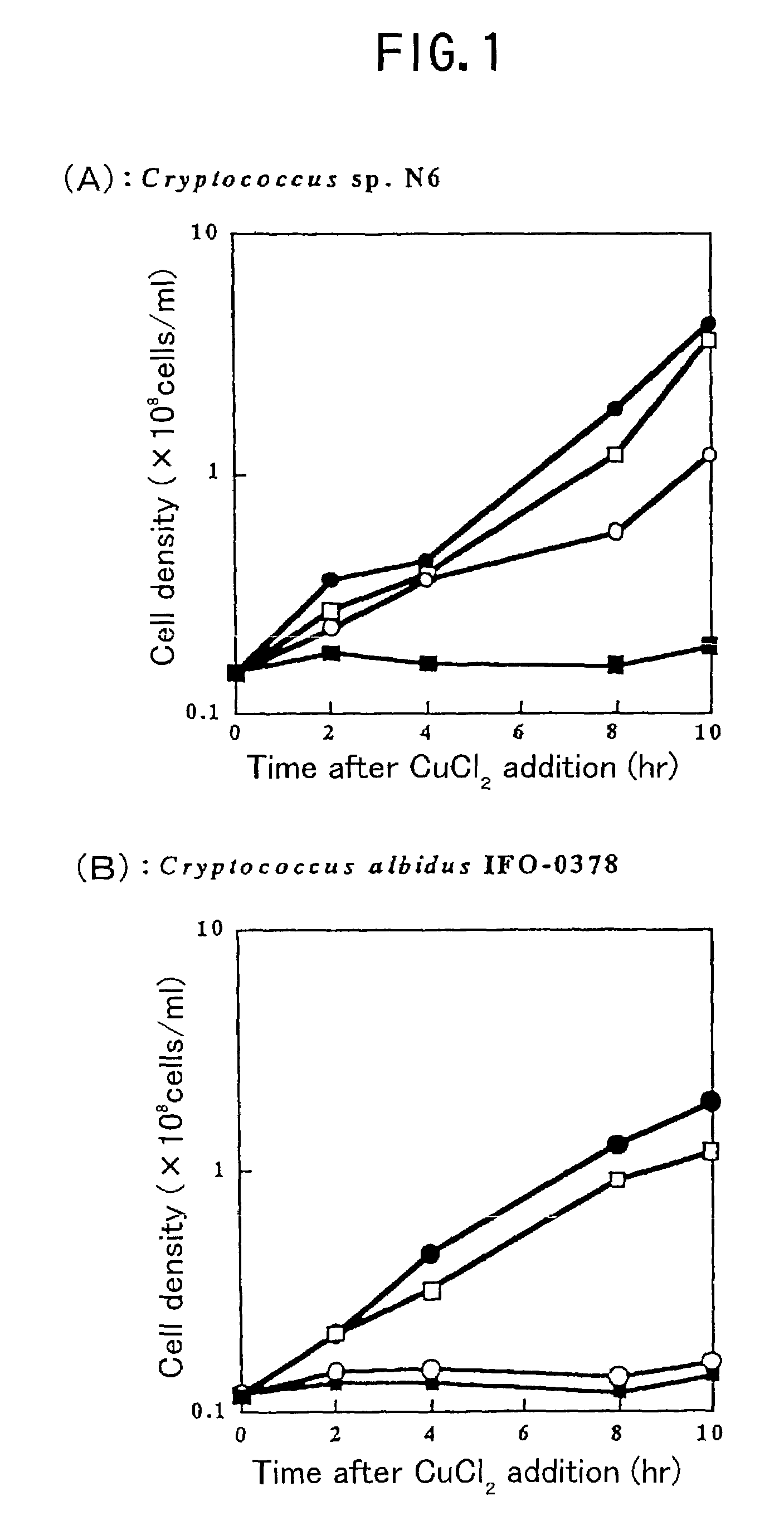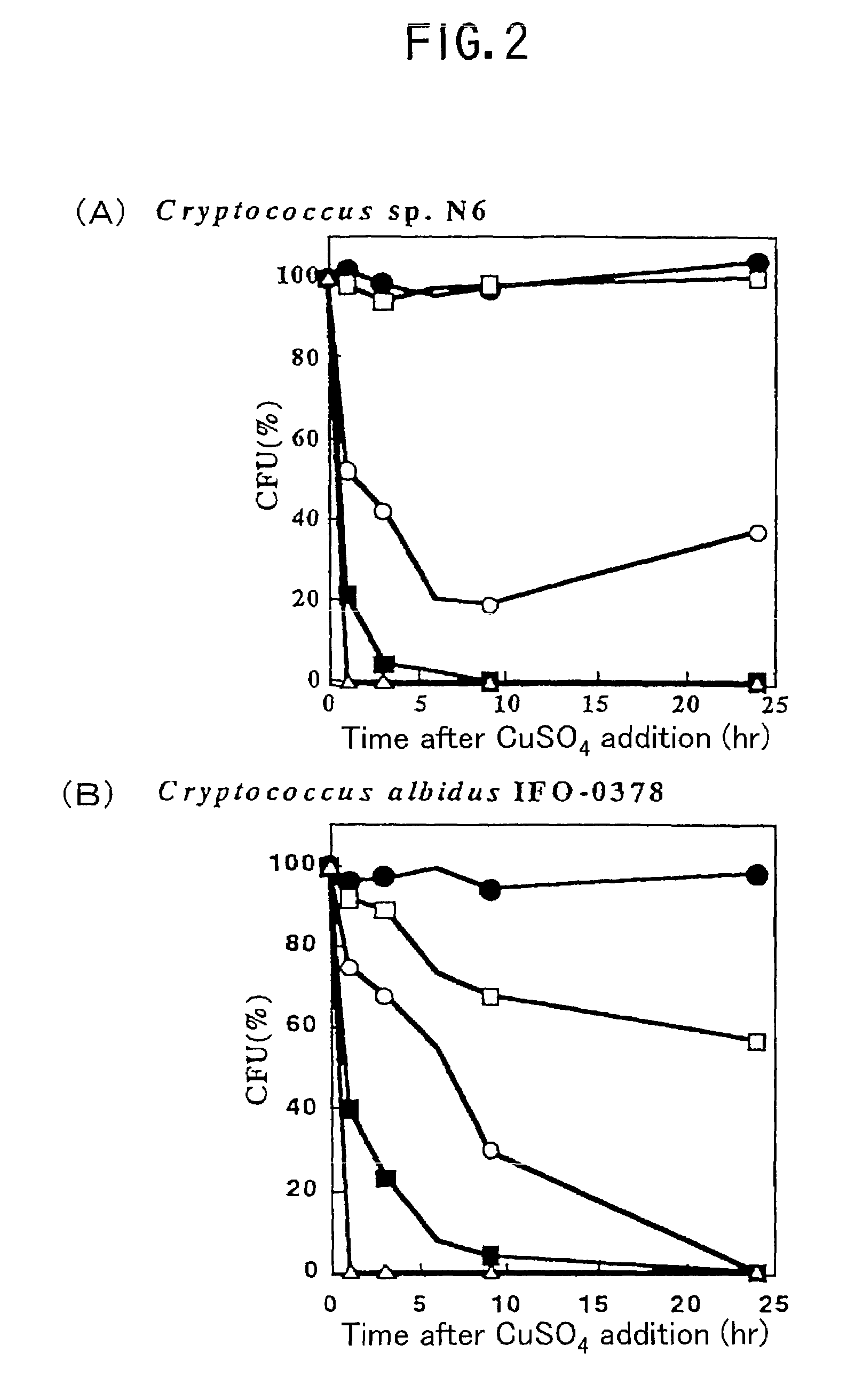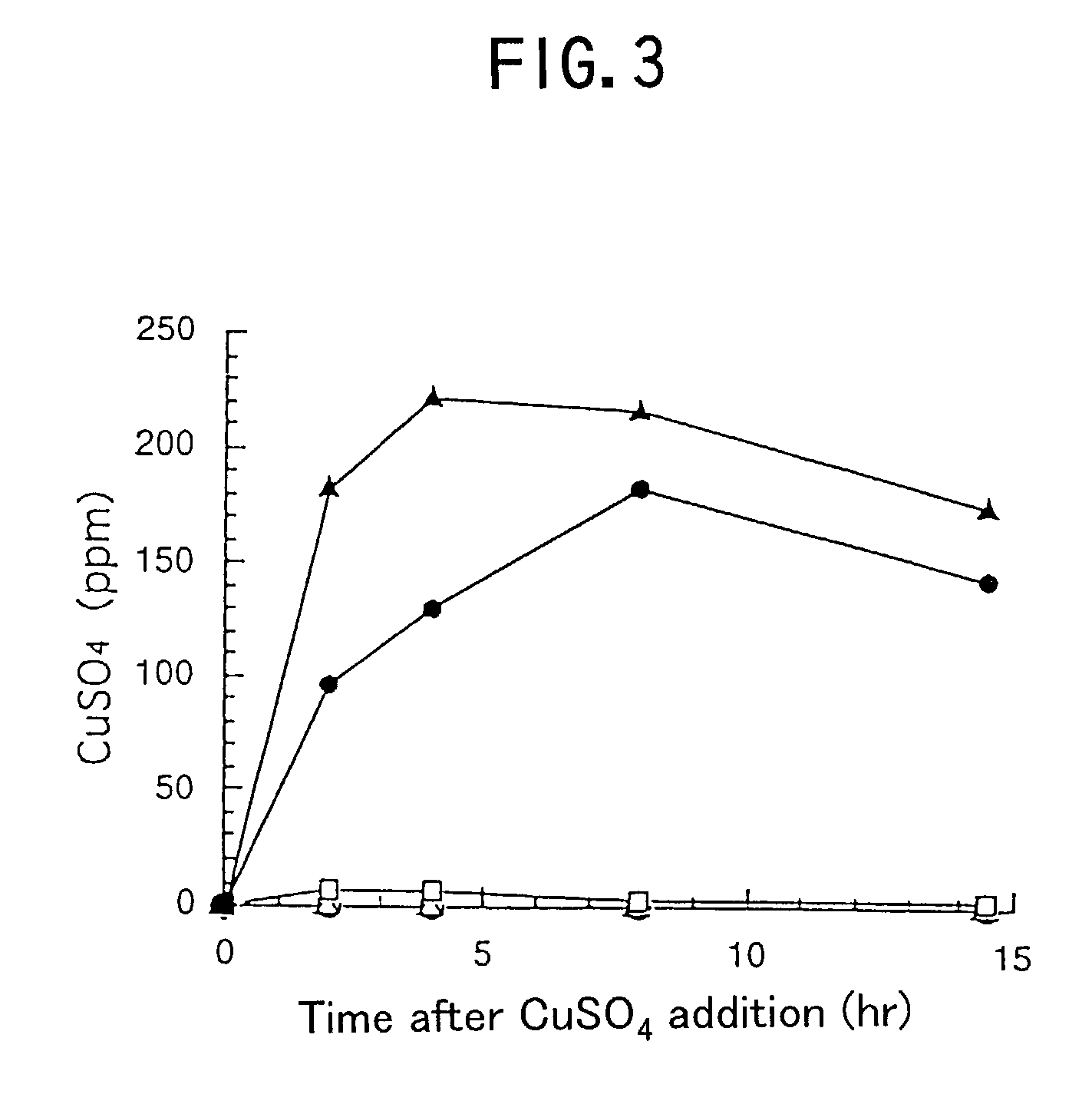Copper tolerant yeast and pectinases produced by the yeast
a technology of pectinases and copper tolerant yeast, which is applied in the direction of fungi-based processes, biological water/sewage treatment, and directed macromolecular evolution. it can solve the problems of not sufficiently revealing the features of yeasts living in such a special environment, unfavorable bacterial growth, and inability to produce enzymes such as enzymes, so as to reduce the growth rate, and enhance the cuso4 tolerance of n6
- Summary
- Abstract
- Description
- Claims
- Application Information
AI Technical Summary
Benefits of technology
Problems solved by technology
Method used
Image
Examples
example 1
Identification of Deep-sea Yeast
(1) Taxonomy
[0042]N6 strain was investigated for sugar assimilation, fermentative ability and nitrate assimilation. The results are shown in Table 1.
[0043]
TABLE 1The characteristics of N6 strainShape : SphericalAssimilative ability for sugars:GRaErSuStRiMaXyMnCeArSaTrRiCaLaRhIMzMe++−++++++++−++−+++++Fermentative ability:GGaRaMaSuTrLa−Assimilative ability for nitrate: +Urease: −Vitamin requirements: +Carotenoid Production: +Amylolysis: −DNase Production: −G: galactose,Ra: Rafinose,Er: Erythritol,Su: Sucrose,St: Solubilized starch,Ri: Ribitol,Ma: Maltose,Xy: D-Xylose,Mn: D-Mannitol,Ce: Cellobiose,Ar: L-arabinose,Sa: Succinic acid,Tr: Trehalose,Ri: D-Ribose,Ca: Citric acid,La: Lactose,Rh: L-Rhamnose,I: Inositol,Mz: Melezitose,Me: melibiose
(2) Determination of 18S rDNA Partial Nucleotide Sequence
[0044]A small amount of Cryptococcus sp. grown on YM (0.5% Bacto peptone, 0.3% Bacto yeast extract, 0.3% malt extract, 1.0% glucose) agar plate was picked up by a...
example 2
Effects of Copper Ion on the Growth
(1) Effects of Copper Ion on the Growth Curve
[0048]To each of the cultures of N6 strain or Cry. albidus IFO 0378 grown to mid log phase (1.0×107 cells / ml) in YPD (1.0% Bacto Yeast Extract, 2.0% Bacto Peptone, 2.0% Glucose) liquid medium copper chloride (CuCl2) or copper sulphate (CuSO4) was added at a final concentration of 0, 1, 10 or 20 mM and the strains were further cultured at 24° C. The cell number was determined at 2, 4, 8 and 10 hours after adding copper using a hemocytometer. The results showed that N6 strain grew in the YPD medium containing CuCl2 or CuSO4 at the final concentration of 1-10 mM to the similar extent as in normal YPD medium (FIG. 1A). On the other hand, Cry. albidus IFO 0378 gradually decreased its grow rate after 2 hours when CuCl2 or CuSO4 was added at a concentration of 1 mM and could not grow at a concentration of 10 mM (FIG. 1B).
(2) Enhancement of Copper Tolerance by Acclimatization
[0049]N6 strain was shown to be able ...
example 3
Effects of Copper Ion on the Viability
[0052]To the culture of N6 strain and Cry. albidus IFO0378 grown in the YPD liquid medium up to the mid log phase (1.0×107 cells / ml) CuCl2 or CuSO4 was added at a final concentration of 0, 1, 20 and 20 mM, respectively, and were cultured at 24° C. After 2, 4, 8 and 10 hours, the cultures were streaked on YPD agar medium and incubated at 26° C. for 2 days. The viability was calculated based on the appeared colonies.
[0053]The results showed that N6 strain was 100% viable in the YPD liquid medium containing 1 mM CuSO4. The results also showed that the viability decreased up to 10 hours later after 10 mM CuSO4 was added to the culture (FIG. 2A) but viable cells gradually increased later. On the other hand, the viability of Cry. albidus IFO 0378 significantly decreased even after 1 mM CuSO4 was added, and the microorganisms completely died after 25 hours in the presence of 10 mM CuSO4 (FIG. 2B). Additionally, by harvesting and observing N6 strain and...
PUM
| Property | Measurement | Unit |
|---|---|---|
| Temperature | aaaaa | aaaaa |
| Temperature | aaaaa | aaaaa |
| Molar density | aaaaa | aaaaa |
Abstract
Description
Claims
Application Information
 Login to View More
Login to View More - R&D
- Intellectual Property
- Life Sciences
- Materials
- Tech Scout
- Unparalleled Data Quality
- Higher Quality Content
- 60% Fewer Hallucinations
Browse by: Latest US Patents, China's latest patents, Technical Efficacy Thesaurus, Application Domain, Technology Topic, Popular Technical Reports.
© 2025 PatSnap. All rights reserved.Legal|Privacy policy|Modern Slavery Act Transparency Statement|Sitemap|About US| Contact US: help@patsnap.com



